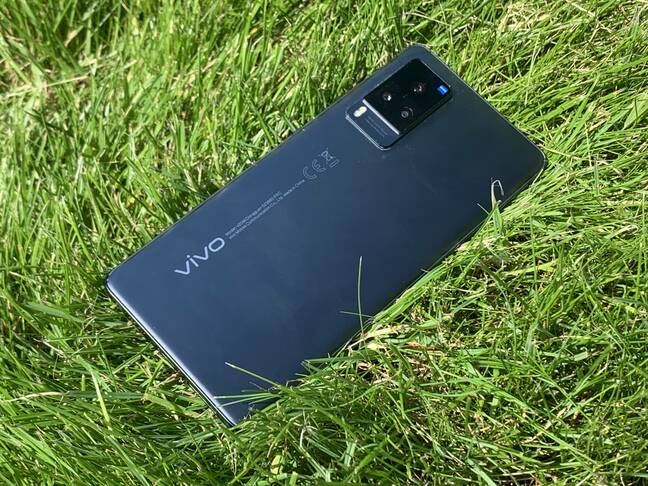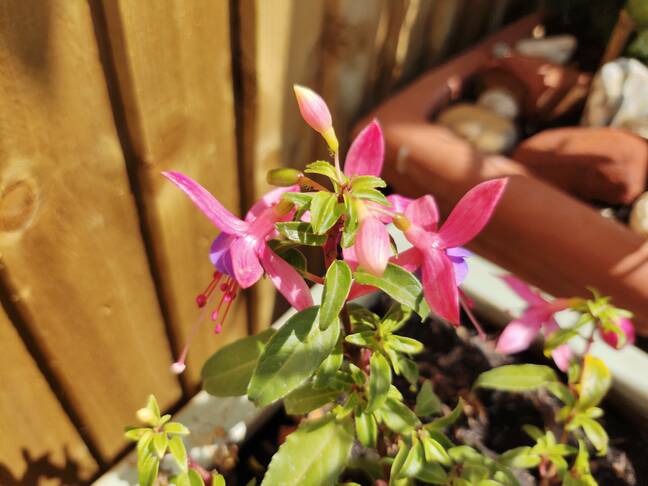Vivo X60 Pro: Branding was plastered all over the Euros, but does the phone perform better than the English team?
Review As England made it way to the final of the Euro 2020 footie tournament, fans of the beautiful game could hardly have failed to notice adverts for Vivo flashing up during matches. The company’s X60 Pro phone is in play but is it any good?
The Register was handed a device by the company to snap shots around London’s Wembley stadium during the recent sporting event and we’ve since spent the last few weeks living with the phone as a daily driver. The result? The Vivo didn’t score any own goals.
The X60 Pro is a flagship device and, while it doesn’t trouble four figures like certain other handsets, will set you back £749 (at time of writing).
The Qualcomm Snapdragon 870 running the show is somewhat below what we’d expect for a flagship device, even if the 12GB of RAM should be more than sufficient to keep a good few apps in memory. There is also 256GB of storage for capturing the photos and video for which this phone is undoubtedly designed.
While we can forgive the Snapdragon 870, we’re not so sure about the omission of wireless charging or waterproofing.
Whinges aside, the phone is handsome and feels almost impossibly thin in the hand (with the usual camera bump protruding from the rear). It comes in two colours, midnight black and shimmer blue; we had the latter. The finish is slick, perhaps a little too much, and gave one the distinct impression that the device was about to slip from one’s fingers at any moment and its glass back shatter on the floor. On the plus side, the back was thankfully not too much of a fingerprint magnet.
The 4,200mAh battery is charged from a USB Type-C connector and Vivo includes both a charger and headphones in the box. The 6.56-inch AMOLED screen has a resolution of 2378 x 1080 pixels and is pleasing to the eye, with bright colours, dark blacks, and a high refresh rate.
Vivo’s Android OS variant is called “Funtouch” and looks to us to be pretty close to stock Android, certainly more so than some of the more gaudy efforts out there. 5G support is also present and correct, and the phone can be secured via a variety of methods, including a fingerprint on the screen.
- ZTE Axon 30 Ultra: Strong effort from an entity-lister, but your tiny child hands may struggle
- Samsung Galaxy A52 5G: Sub-$600 midranger makes premium phones feel frivolous
- Galaxy quest: Yet another sub-£500 phone comes to trouble mobile big dogs in the form of Realme GT 5G
- Unihertz Titan Pocket: Like asking Mum for a BlackBerry and she tells you ‘but we’ve got a BlackBerry at home’
However, it is the camera of which Vivo is most proud, and justifiably so. The company makes much of its “co-engineering” partnership with Zeiss (provider of optics to some of Nokia’s phones over the years, including the ultimately doomed Lumia 1020).
For your money, you get three rear-facing lenses. A 48MP main camera, a 13MP wide-angle lens, and a 13MP portrait snapper. The front-facing camera operates at 32MP for those all-important selfies.
Camera buffs will be pleased to note that the 48MP main camera has an impressive aperture of f/1.48. The star of the show is, however, the Gimbal Stabilisation 2.0 to compensate for camera shakes. While the company showed off its snapper-smarts via the usual medium of canned videos of extreme sports, we found the tech worked equally well for our more straightforward home video purposes.
There are a near-bewildering array of camera modes, but we found that the chunky aperture of the 48MP camera, coupled with the stabilisation system, made for some impressive shots.
Other modes did not fare so well – the company was very proud of the “Pro Sports” burst mode, but we found there was a maddeningly tiny delay between pressing the button and the snapping starting. That said, other modes, such as Night, worked surprisingly well for a mobile device.
There is also only a 2x optical zoom lens (and more digital zoom levels), which will disappoint some, but proved perfectly adequate for us.
However, there is no getting away from the price. We would have hoped for a more a powerful CPU, but the Snapdragon 870 is more than sufficient to keep the X60 Pro ticking over for normal tasks. Wireless charging is, however, sorely missed.
Yet what sets this phone apart is its camera and, most importantly, the stabilisation technology. Sure, a few more pounds can net one a OnePlus 9 Pro, with its Hasselblad camera tech and Snapdragon 888, but for us, a lower price and impressive snapper (even with the other flaws) means the X60 Pro might not be left to languish on the sidelines.
And we’re very, very sorry for the football references. ®



